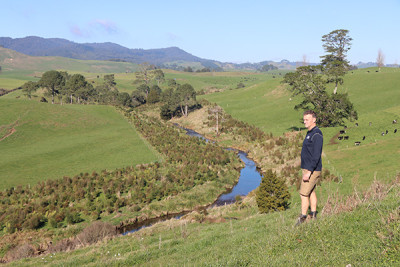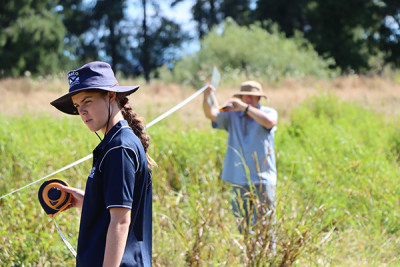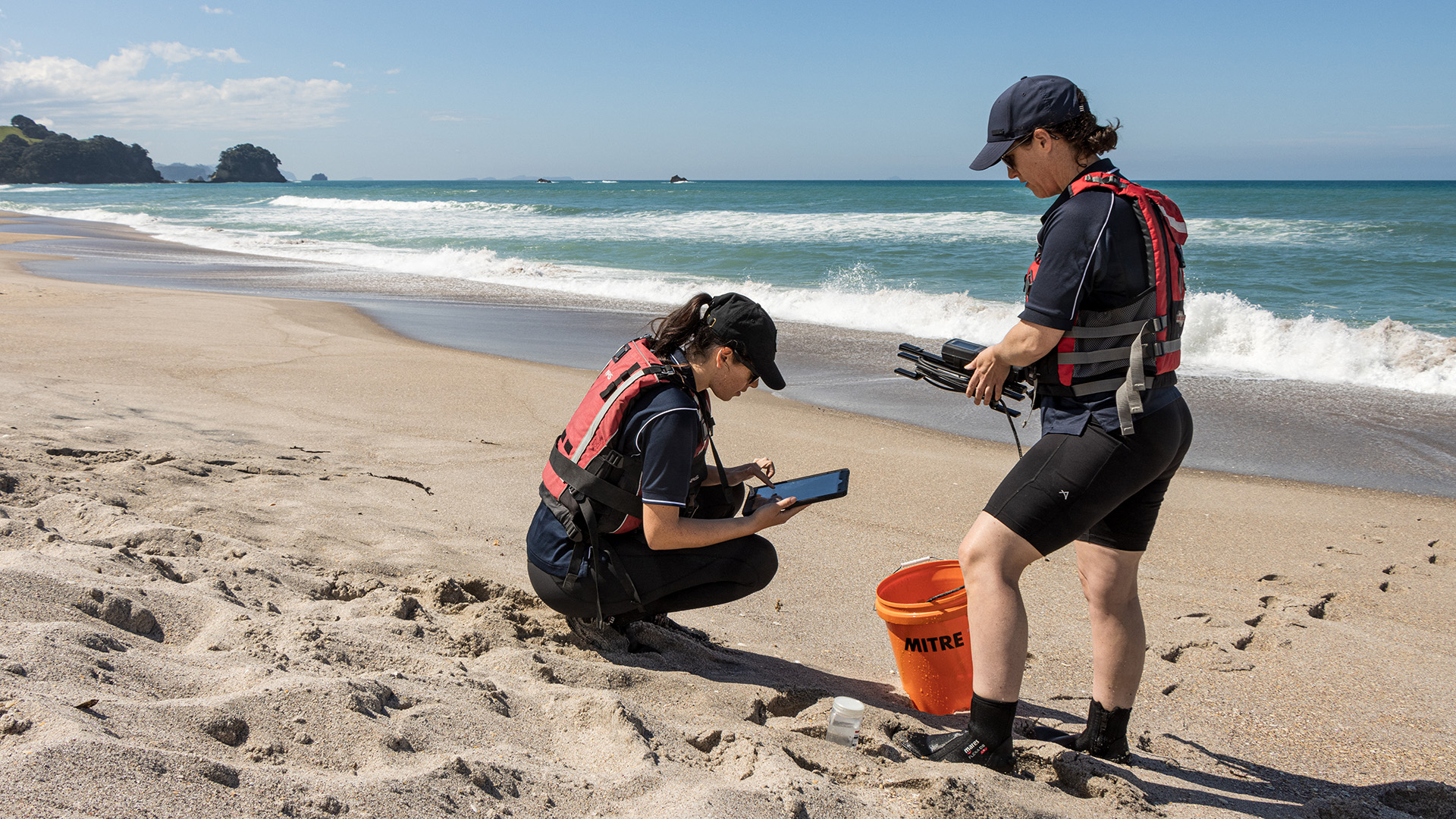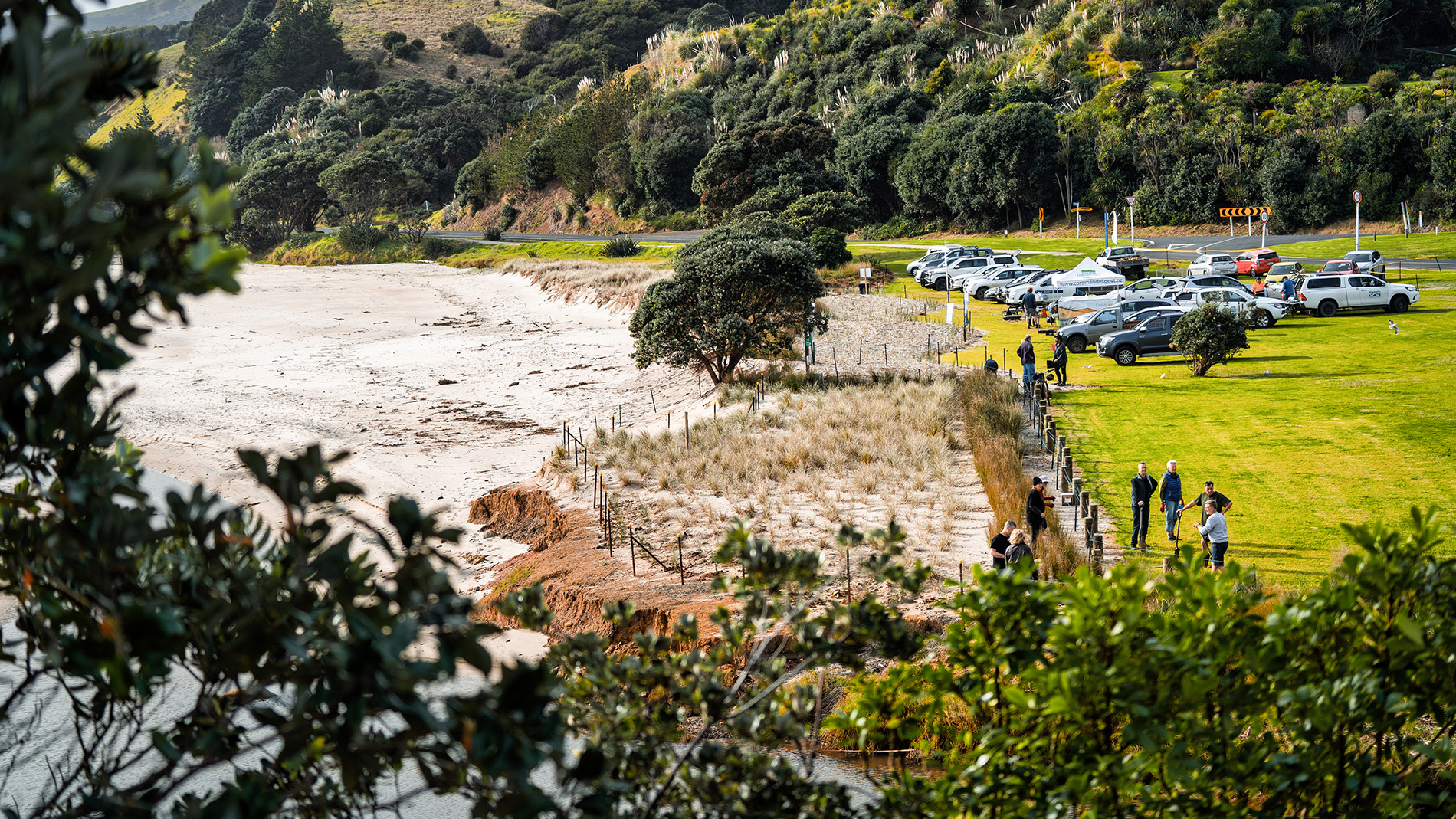
|
Mike Scarsbrook | Manager - Environmental ScienceRegional councils play a crucial role in environmental management. They are responsible for managing the effects of land use, fresh water, air, and coastal waters, as well as developing a Regional Policy Statement and issuing consents for activities that impact the environment. |

The council has a monitoring network across the region’s rivers, lakes, estuaries and coasts, groundwater, soils, land and geothermal areas.
I believe we are all the custodians or kaitiaki of the environment for future generations. We want to leave our environment in a better state than how we found it.
If we have a healthy environment, we have options. If we degrade our environment, we essentially degrade the social, cultural, biodiversity and economic values of our region. We limit options for future generations and incur significant restoration costs.
So, how healthy is the Waikato? And how do we know?

We incentivise landowners to exclude stock from waterways and plant riparian margins.
We have a valuable monitoring network across our rivers, lakes, estuaries and coasts, our groundwater, soils, land, our air quality and geothermal areas.
We monitor these resources so we can inform our communities about their current state, how it’s changing over time and what the key pressures are.
We have decades of environmental monitoring data that we’ve collected and report on, and which we use to identify problems and find solutions for.

We are trialling a terrestrial biodiversity monitoring programme on private land.
What we know is that parts of the region are very healthy.
Lake Taupō is as good as it gets for a lake of that size, thanks to rules introduced in the early 2000s to tackle nitrogen entering the lake via ground water.
There’s an expectation the lake’s water quality will remain high, with 10 metres plus water clarity, and that it will always be in a ‘close to natural state’, or with very minor impacts on it.
In contrast, Lake Waikare – our second largest lake – in the lower Waikato is a shallow lake that is severely degraded.
In terms of water quality, it has extremely high levels of nutrients and sediments and frequent nuisance algal blooms.
It’s like many of our lowland lakes. Introduced species, like koi carp and gold clams, put even greater pressure on them. They have reduced biodiversity value and they’re often not safe to swim in. Improving these waters will be a massive and lengthy challenge.
How we use our land is what degrades our water resources, our freshwater environments and our coastal environment. Many of the solutions to restore our environment rests with how we grow our food, manage our farms and build our towns and cities.
We know that investing in our environment pays real dividends in improved values.
For example, 60 years ago, the bacteria levels in the Hamilton section of the Waikato River were 100 times that of today’s levels.
Through improved technology and stricter consent conditions, point source discharges were substantially improved. I swim in the Waikato River just above the Hamilton City water intake and the water quality there is now acceptable for swimming almost all year round. When I’ve come out of the river, people have asked: “Isn’t it polluted?” I say no, it’s safe to swim in. Of course, it’s a swift and powerful river, so not suitable for everyone, but the risk of getting sick at Hamilton Gardens is low.
We know that improvements like these do come at a cost so we are all mindful of this in all our work. The biggest area where we will contribute to improving water quality is around restoring and enhancing catchments, which is the area of land where water drains from. It requires targeted action to manage loss of contaminants from the land.
Farmers have already made significant improvements in their practices to reduce contaminants from entering fresh water. We’ve seen a doubling in the length of streams fenced for stock exclusion since 2002, with much of the setbacks being planted out. More than 60 per cent of all pastoral streams now have effective fencing.
We incentivise landowners to do this work and offer increased funding for work in priority catchments by partnering with other funders such as Waikato River Authority and central government’s Hill Country Erosion Project.
We’re still awaiting a decision by the Environment Court regarding our Proposed Waikato Regional Plan Change 1, but this new policy will legislatively require farmers and growers in the Waikato and Waipā river catchments to continue to improve the health and wellbeing of fresh water in line with Te Ture Whaimana o Te Awa of Waikato, the Vision & Strategy for the Waikato and Waipa Rivers. This is the primary direction setting document for those catchments.
Overall, we’re heading in the right direction to manage the effects of land use on water, but we’ve got more work to do around how we improve our terrestrial, freshwater and marine biodiversity.
Habitat is scarce, as most of our wetlands have been drained and just 27 per cent of the land in our region remains in native vegetation – less than 10 per cent in many lowland districts. Climate change is another concern. A changing climate can lead to habitat loss by affecting vegetation, food sources and access to water, and creates opportunities for the establishment of current and new pest species and diseases.
All of this puts extreme pressures on our native plants and animals, but reversing biodiversity loss is possible with greater and more collective effort. As a council, we’ve committed to a range of biodiversity work, including the development of a regional biodiversity accord and strategy, and then working with others to progress a prioritised pathway that protects and restores biodiversity to 2050 and beyond. We are already trialling a terrestrial biodiversity monitoring programme on private land in the hope that, in the future, a full monitoring programme will give us an overview of the state of the indigenous biodiversity across the region. A new programme to monitor the extent and health of our vitally important wetlands is also being rolled out.
Elsewhere, we’ve started to look more broadly at the ecological health of our coastal marine area, which is in fact a third of our total regional area. Our marine systems face multiple and cumulative stresses: what happens on the land affects our marine environment. You may be familiar with the phrase from the mountains to the sea. We’re expanding our previous focus on estuaries to include monitoring of rocky reefs and other subtidal habitats that are impacted by human activities, and strengthening our monitoring systems across the Firth of Thames – which is also a degraded waterbody. Hopefully, this monitoring will check it doesn’t degrade further and help capture its recovery.
By looking back, which is what monitoring allows us to do, we can look forward to drive improvements in biodiversity management and policy – much like what has been done and is being done for water.

Improving water quality, enhancing the health of our coastal and marine ecosystems, protecting and restoring our unique native plants and animals and the ecosystems they live in, keeping people safe on our roads and waterways as well as from floods and other hazards, and providing passenger transport services.
We do all this, and more.
Learn more about our mahi
Every decision made by councillors significantly impacts the lives of Waikato residents, today and for the future. Elected members have the responsibility to represent the interests of all residents and ratepayers in the region, going beyond their immediate constituencies.
Do you have what it takes to sit at the decision-making table of Waikato Regional Council?
Start your elections journeyGet ready to participate in local elections 2025 for the Waikato region.
To ask for help or report a problem, contact us
Tell us how we can improve the information on this page. (optional)